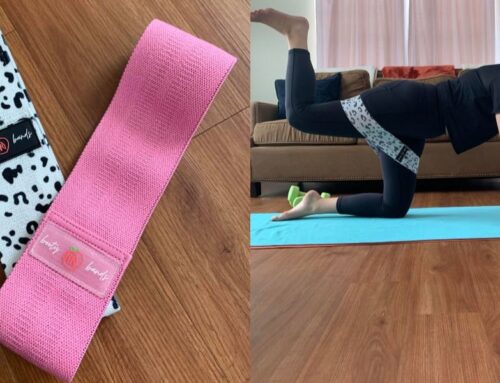
Maintaining muscle mass can be a challenging task, especially when you’re not working out regularly. Whether it’s due to a busy schedule, injury, or any other reason, taking a break from your regular exercise routine can lead to a decrease in muscle mass. This can be particularly frustrating for those who have put in significant effort to build and maintain their muscles.
However, the good news is that it is possible to maintain muscle mass even when you’re not working out regularly. With the right diet, lifestyle habits, and a few simple exercises, you can keep your muscles strong and healthy, even during periods of inactivity.
In this article, we’ll explore the science behind muscle maintenance, and the various strategies you can use to preserve your hard-earned muscle mass. From dietary recommendations to lifestyle habits, we’ll cover everything you need to know to maintain muscle mass, even when you’re not working out. Whether you’re taking a break from the gym or looking to supplement your exercise routine with additional muscle maintenance strategies, this article has got you covered.
Why do we lose muscle mass?
The loss of muscle mass is a natural process that happens to everyone as they age. After the age of 30, we start to lose about 3-5% of our muscle mass each decade.
This loss of muscle mass can lead to many age-related problems, such as frailty, falls, and fractures.
There are many things that can contribute to the loss of muscle mass, including:
- Inactivity: A sedentary lifestyle can lead to muscle loss.
- Disease: Certain diseases, such as cancer and AIDS, can lead to muscle wasting.
- Nutritional deficiencies: Not getting enough of the right nutrients can lead to muscle loss.
- Medications: Some medications, such as steroids, can cause muscle loss.
- Aging: As we age, we lose muscle mass.

Top 10 Tips For Maintaining Muscle Mass
Here are 10 tips that you can use to maintain your gains while you’re not hitting the gym:
1. Track the Food You Eat
One of the top tips for maintaining muscle mass is to track the food you eat. This is because the food you eat plays a crucial role in muscle maintenance and growth. Tracking your food intake can help ensure you are consuming enough calories and macronutrients to support your muscle mass.
To track your food intake, you can use a food journal, a smartphone app, or an online tracking tool. You should aim to track your intake of protein, carbohydrates, and fat, as well as your total calorie intake. Protein is particularly important for muscle maintenance and growth, so be sure to track your daily protein intake and ensure you are consuming enough to support your muscle mass.
In addition to tracking your intake, it’s also important to pay attention to the quality of the food you eat. Aim to consume whole, nutrient-dense foods such as lean protein, fruits and vegetables, whole grains, and healthy fats. These foods provide the vitamins, minerals, and antioxidants your body needs to maintain and build muscle mass.
Tracking your food intake can also help you identify any areas where you may be falling short in your nutrition. For example, if you find that you are consistently falling short on your protein intake, you can adjust your diet to include more protein-rich foods or consider supplementing with protein powder.
2. Drink More Water
Another important tip for maintaining muscle mass is to drink more water. Water is essential for many bodily functions, including muscle repair and growth. Dehydration can lead to muscle fatigue and weakness, making it difficult to maintain muscle mass.
Aim to drink at least 8-10 glasses of water per day, and more if you are active or live in a hot climate. You can also consume water-rich foods such as fruits and vegetables to help increase your hydration levels.
Drinking water before and after exercise is particularly important for muscle maintenance and recovery. During exercise, your body loses water through sweat, so it’s important to replenish these fluids to prevent dehydration and muscle fatigue. After exercise, drinking water can help flush out metabolic waste and promote muscle recovery.
In addition to drinking water, you can also consider incorporating sports drinks or electrolyte-replenishing beverages if you are engaging in intense or prolonged exercise. These drinks can help replace the electrolytes lost through sweat and provide your muscles with the nutrients they need to perform at their best.
3. Take Supplements for Extra Nutrition
While it’s important to get most of your nutrients from whole foods, taking supplements can be a helpful way to support muscle maintenance and growth. Some supplements that are commonly recommended for muscle maintenance include:
- Protein supplements: Protein is crucial for muscle maintenance and growth, and many athletes and fitness enthusiasts supplement with protein powder to ensure they are getting enough.
- Creatine: Creatine is a naturally occurring substance that helps provide energy to muscle cells. Supplementing with creatine can help improve muscle strength and endurance.
- Branched-chain amino acids (BCAAs): BCAAs are essential amino acids that help promote muscle protein synthesis and reduce muscle breakdown.
- Omega-3 fatty acids: Omega-3 fatty acids are anti-inflammatory and can help reduce muscle soreness and inflammation after exercise.
- Vitamin D: Vitamin D is important for bone health and muscle function, and supplementing with vitamin D can help improve muscle strength and performance.
It’s important to note that supplements should never replace a healthy diet and lifestyle, and it’s always best to consult with a healthcare professional before starting any supplement regimen. Additionally, not all supplements are created equal, so be sure to choose high-quality supplements from reputable brands.
4. Do Two 20-Minute Workouts a Week
Doing two 20-minute workouts per week can be an effective way to maintain muscle mass. While it may not seem like much, short workouts can still provide a stimulus for muscle maintenance and growth.
When it comes to short workouts, it’s important to focus on exercises that target multiple muscle groups at once. This can help maximize the efficiency of your workouts and provide a more effective stimulus for muscle growth. Some examples of multi-joint exercises include squats, lunges, push-ups, and pull-ups.
In addition to focusing on multi-joint exercises, you can also incorporate high-intensity interval training (HIIT) into your workouts. HIIT involves alternating periods of high-intensity exercise with periods of rest or lower-intensity exercise. This can help increase your heart rate and provide a more intense stimulus for muscle growth.
When planning your short workouts, be sure to include a warm-up and cool-down period to prevent injury and promote recovery. You can also consider working with a personal trainer or fitness professional to help design a workout program that is tailored to your specific goals and needs.
5. Do 15 Minutes of Stretching Each Day
Stretching is an important component of any fitness routine, and it can be particularly beneficial for maintaining muscle mass. Regular stretching can help improve flexibility and mobility, prevent muscle imbalances and injury, and reduce muscle soreness and stiffness.
Aim to do at least 15 minutes of stretching each day, focusing on the major muscle groups such as the hamstrings, quadriceps, hip flexors, and chest. You can incorporate static stretching, which involves holding a stretch for a set period of time, or dynamic stretching, which involves moving through a range of motion to improve flexibility and mobility.
In addition to stretching on your own, you can also consider attending yoga or Pilates classes to improve your flexibility and mobility. These classes can also help you build strength and endurance, which can further support muscle maintenance.
When stretching, it’s important to listen to your body and avoid pushing yourself too hard. Stretching should feel comfortable and relaxing, not painful or uncomfortable. If you have any injuries or chronic pain, be sure to consult with a healthcare professional before starting a stretching program.
6. Practice Yoga or Pilates
Yoga and Pilates are two popular forms of exercise that can be particularly beneficial for maintaining muscle mass. Both practices focus on building strength, flexibility, and balance, which can help support muscle maintenance and prevent injury.
Yoga involves holding poses and practicing controlled breathing to improve flexibility, strength, and relaxation. Many yoga poses require holding your own body weight, which can help build strength and maintain muscle mass. Additionally, the controlled breathing in yoga can help reduce stress and promote relaxation, which can help support overall health and well-being.
Pilates is a low-impact form of exercise that focuses on building core strength, flexibility, and alignment. Pilates exercises are designed to target the deep muscles of the core, which can help support good posture and prevent injury. By building core strength and improving flexibility, Pilates can help support overall fitness and help maintain muscle mass.
When practicing yoga or Pilates, it’s important to work with a qualified instructor who can guide you through proper technique and alignment. It’s also important to listen to your body and avoid pushing yourself too hard. While yoga and Pilates can be beneficial for maintaining muscle mass, they should be combined with other forms of exercise, such as strength training and cardiovascular exercise, for optimal results.
7. Perform HIIT Cardio Once a Week
High-Intensity Interval Training (HIIT) is a type of cardio exercise that involves short bursts of intense activity followed by periods of rest or lower intensity exercise. HIIT can be an effective way to maintain muscle mass because it can help burn fat and improve cardiovascular health without sacrificing muscle mass.
Performing HIIT cardio once a week can be an effective way to incorporate cardio exercise into your routine without overdoing it. Aim to do a 20-30 minute HIIT workout once a week, incorporating exercises such as sprinting, jumping jacks, and mountain climbers.
During the intense intervals of a HIIT workout, your body burns calories and fat, which can help promote weight loss and improve cardiovascular health. Additionally, HIIT can help boost your metabolism, which can help you burn more calories throughout the day.
It’s important to note that HIIT can be very challenging, and it’s important to start slowly and gradually increase the intensity of your workouts over time. If you have any injuries or health concerns, be sure to consult with a healthcare professional before starting a HIIT workout program.
FAQs.
What are some things that can contribute to the loss of muscle mass?
There are many things that can contribute to the loss of muscle mass, including inactivity, malnutrition, hormonal changes, and certain medications. Additionally, some chronic diseases can lead to muscle loss.
How can I prevent the loss of muscle mass?
There are many things you can do to prevent the loss of muscle mass. Getting regular exercise, eating a healthy diet, and avoiding medications that can cause muscle loss are all good ways to prevent muscle loss. Additionally, if you have a chronic disease that could lead to muscle loss, it is important to manage it effectively.
What are some treatments for muscle loss?
There are many treatments for muscle loss, including exercise, physical therapy, and medications. Additionally, if you have a chronic disease that could lead to muscle loss, it is important to manage it effectively.
Can sleep help prevent muscle loss?
Yes, getting enough sleep is important for overall health and can help prevent muscle loss. Additionally, exercise and eating a healthy diet are also important for preventing muscle loss.
Will I lose muscle if I don’t use it?
Yes, if you don’t use your muscles, they will atrophy (waste away). This is why it is important to get regular exercise, even if you’re not trying to build muscle. Additionally, certain chronic diseases can lead to muscle loss.
The bottom line
Maintaining muscle mass is crucial for overall health and fitness. However, there may be times when you can’t work out regularly due to injury, illness, or other commitments. In such situations, it’s essential to adopt strategies to maintain muscle mass and prevent muscle loss.
In this article, we’ve discussed several effective ways to maintain muscle mass when you’re not working out. These include maintaining a balanced diet that’s high in protein, staying active through low-impact exercises like walking or yoga, practicing muscle-strengthening exercises, and getting enough rest and recovery.
Additionally, we’ve emphasized the importance of maintaining consistency in your habits and routines to avoid losing muscle mass. While it may be challenging to maintain muscle mass without regular workouts, implementing these strategies can help you preserve your gains and prevent setbacks.
It’s essential to remember that maintaining muscle mass is a long-term commitment and requires patience, consistency, and dedication. By adopting these habits and incorporating them into your lifestyle, you can maintain your muscle mass and achieve optimal health and fitness.



